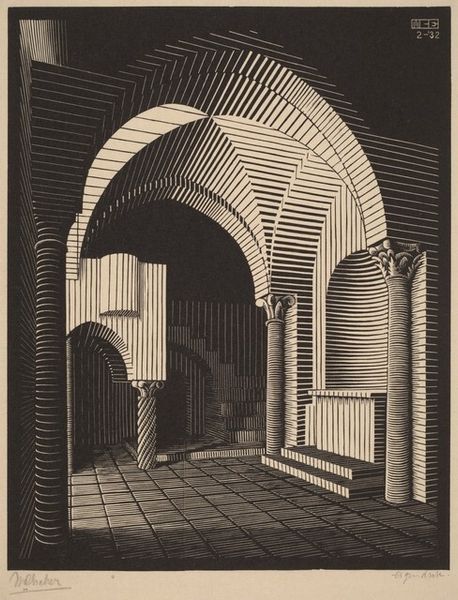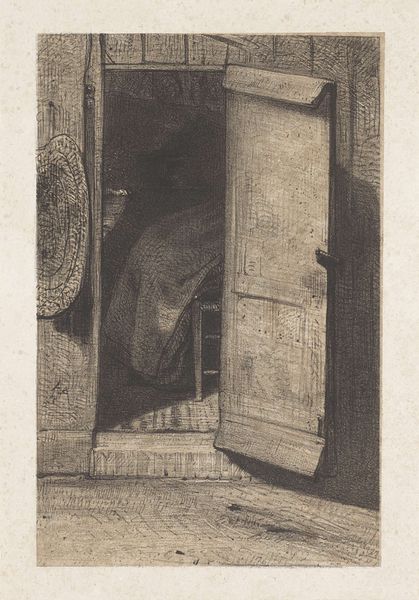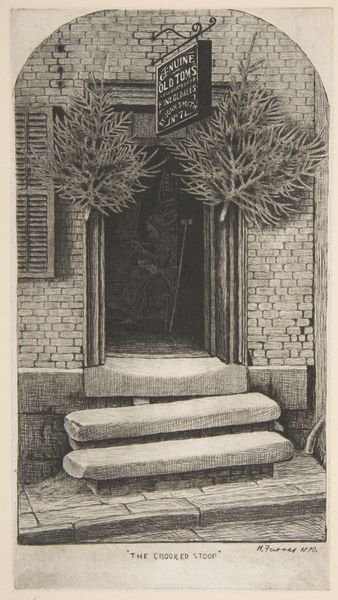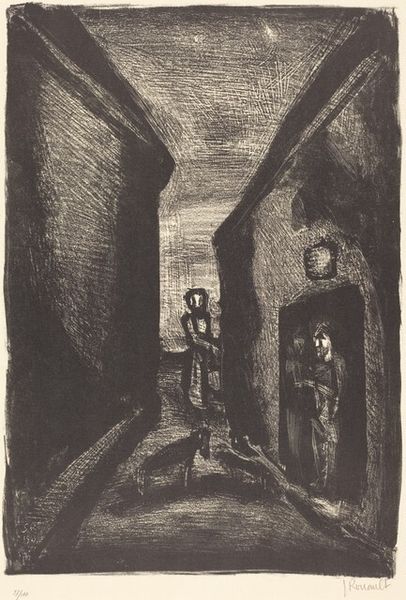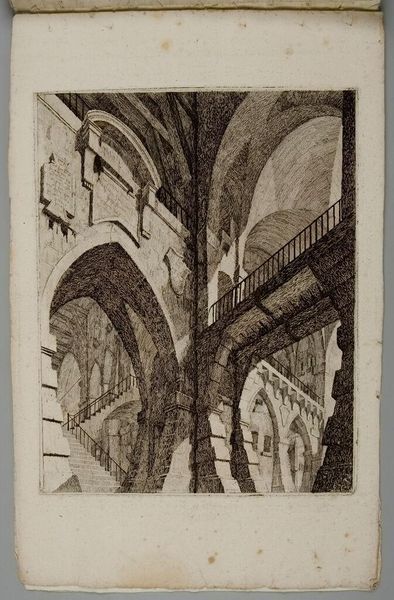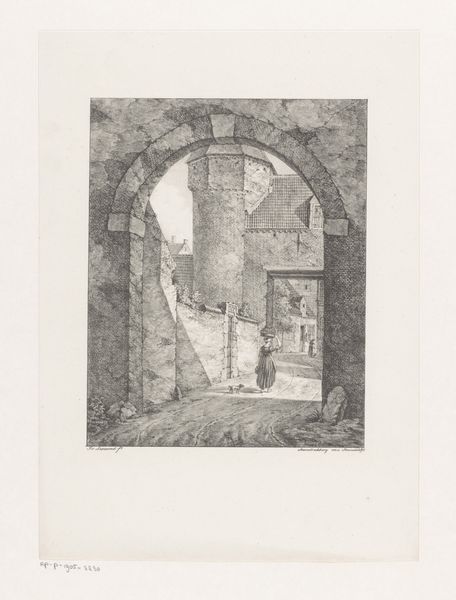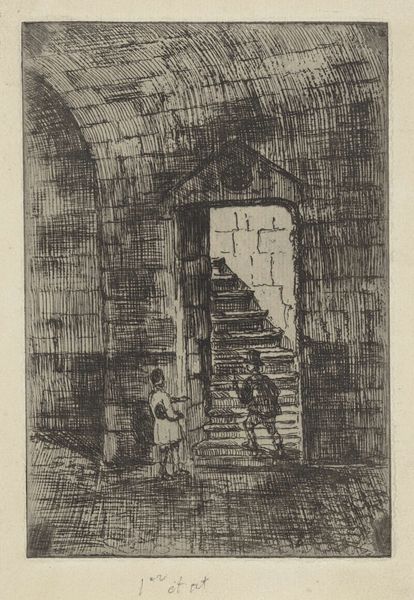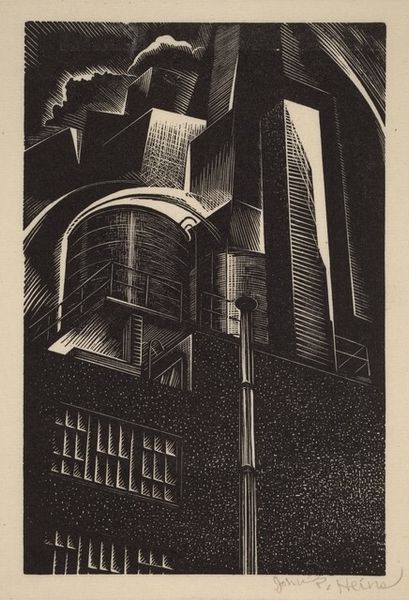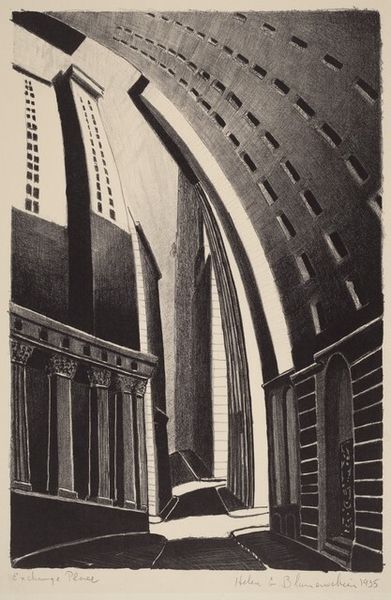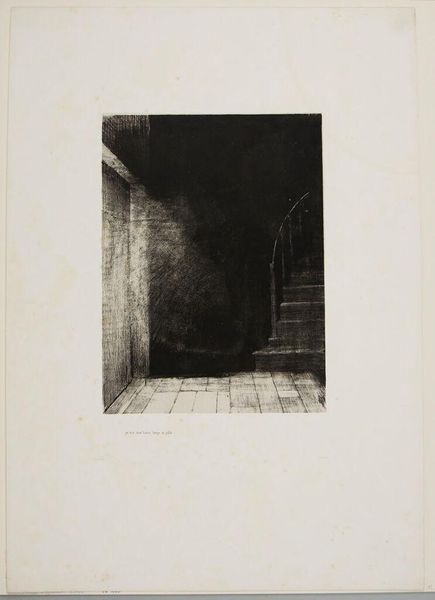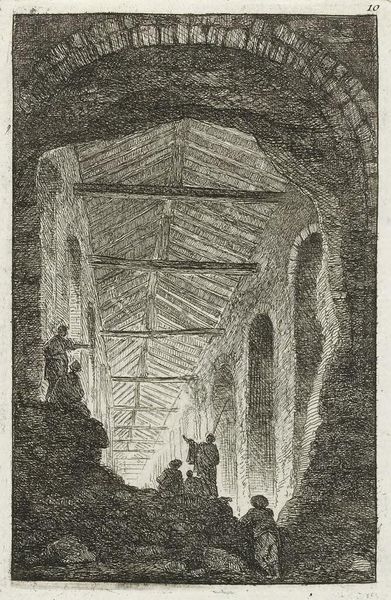
graphic-art, print, woodcut
#
graphic-art
# print
#
geometric
#
woodcut
#
line
#
cityscape
Dimensions: image: 18.1 × 12.7 cm (7 1/8 × 5 in.) sheet: 24.13 × 21.59 cm (9 1/2 × 8 1/2 in.)
Copyright: National Gallery of Art: CC0 1.0
Curator: This woodcut, "Covered Alley in Atrani," was created by M.C. Escher in 1931. The print showcases Escher’s masterful use of perspective to depict an Italian cityscape. Editor: The stark contrast of black and white immediately strikes me. There's a geometric rhythm to it, like a maze designed to pull you in and lose you among the staircases and archways. Curator: It’s interesting to view Escher’s work through a lens of the sociopolitical context of the early 1930s, a period defined by emerging fascism and looming shadows of social disruption in Europe. Could Escher have subconsciously used the spatial disorientations here to reflect those broader anxieties? Editor: Possibly. But focusing solely on the internal, visual architecture, look how each line dictates light and shadow, constructing a world based purely on geometric relationships and spatial logic. Curator: Atrani itself offers interesting historical layers. A small fishing village in the Amalfi Coast, it would have represented an antiquated and vernacular Italian identity which artists like Escher were eager to represent, a view of traditional life untouched by modernization, perhaps. Editor: I appreciate your point about Atrani’s specific social implications, but it also stands as a masterful experiment in light and shadow. Notice how the white lines not only define form but guide the viewer's eye. The tonal distribution shapes our perception entirely, doesn't it? Curator: Undoubtedly. But these stark contrasts were not only aesthetically motivated. The rise of pictorial magazines, using images as political tools, suggests Escher knew of the social power inherent in distributing images, even through artwork depicting daily life. Editor: Maybe, but beyond those contexts, isn't the core of the work Escher's playful, nearly obsessive focus on pattern and spatial anomaly itself? The receding depth pulls you into the unknown recesses of the town with dramatic elegance. Curator: Yes. In many ways the true appeal lies in how he merged formal experimentation with a nostalgic portrait of Italy’s enduring appeal for northern European audiences, presenting both complex artistic strategies alongside images representing stable societal traditions. Editor: So, it seems we both agree on this enduring image’s qualities. My focus hones in on the intrinsic formal devices, and you highlight it as a record of social-historical commentary. An intersection, perhaps, where art's visual forms are inextricably interwoven with its world.
Comments
No comments
Be the first to comment and join the conversation on the ultimate creative platform.
